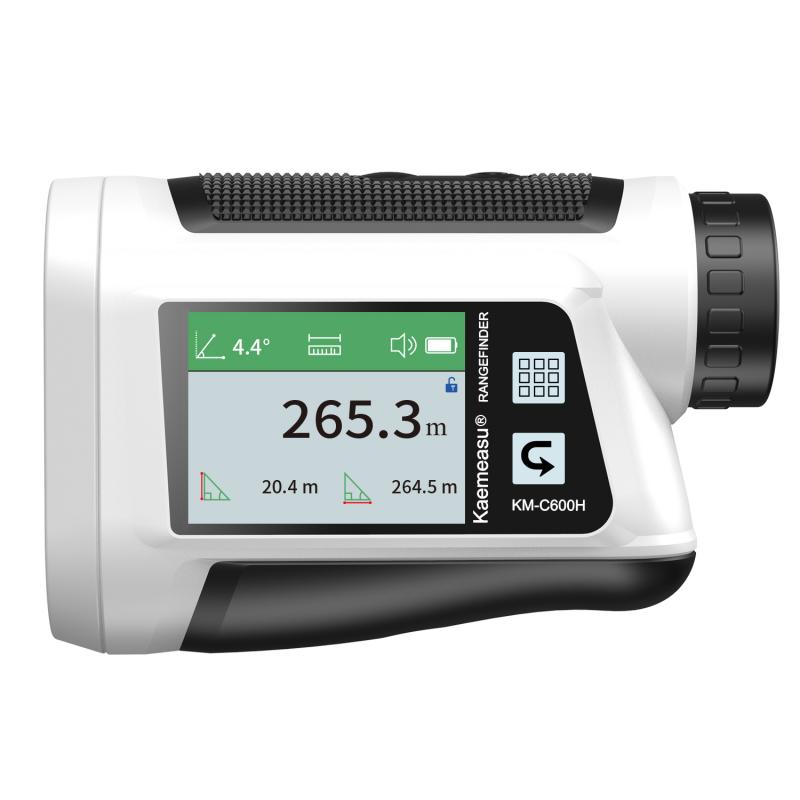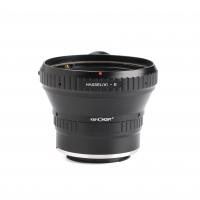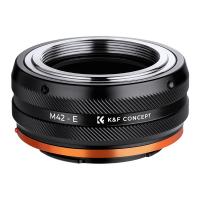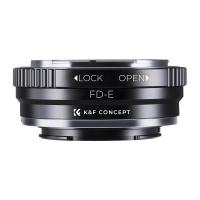What Does Fine Focus Do In A Microscope ?
Fine focus in a microscope is a mechanism that allows for precise adjustment of the focus on a specimen. It is used to make small, incremental changes to the position of the objective lens or the stage, resulting in a clearer and more detailed image. By using the fine focus knob, the user can bring the specimen into sharp focus, particularly when working with high magnification objectives. This adjustment is necessary because even slight movements or vibrations can cause the specimen to go out of focus. The fine focus control provides a way to compensate for these disturbances and achieve optimal clarity in the observed image.
1、 Fine focus adjustment: Refines the focus for precise specimen observation.
Fine focus adjustment in a microscope is a crucial feature that allows for precise specimen observation. It is used to refine the focus and bring the specimen into sharp clarity, enabling researchers and scientists to study the intricate details of the specimen under examination.
The fine focus adjustment mechanism is typically found on the microscope's focusing knob, which allows for both coarse and fine adjustments. While the coarse focus adjustment brings the specimen into a rough focus, the fine focus adjustment provides a more refined and precise focus.
The fine focus adjustment works by moving the objective lens or the stage slightly up or down, making small adjustments to the distance between the specimen and the lens. This movement allows for the correction of any slight deviations in focus, ensuring that the specimen is in clear view.
Precise specimen observation is essential in various scientific fields, such as biology, medicine, and materials science. It enables researchers to study the intricate structures, cellular components, and behaviors of organisms or materials. By using the fine focus adjustment, scientists can bring specific areas of interest into sharp focus, allowing for detailed analysis and accurate measurements.
In recent years, advancements in microscope technology have led to the development of automated fine focus adjustment systems. These systems use algorithms and sensors to detect the optimal focus point, eliminating the need for manual adjustments. This automation not only saves time but also reduces the risk of human error, ensuring consistent and accurate results.
In conclusion, the fine focus adjustment in a microscope is a critical feature that refines the focus for precise specimen observation. It allows scientists to study the intricate details of organisms or materials, enabling advancements in various scientific fields. With the advent of automated fine focus adjustment systems, the process has become more efficient and reliable.

2、 Enhances clarity: Allows for sharper image resolution and detail.
Fine focus is an essential feature in a microscope that allows for precise adjustments to enhance the clarity of the observed specimen. It plays a crucial role in achieving sharper image resolution and detail, ultimately improving the overall quality of microscopic observations.
The fine focus knob is typically located on the microscope's focusing mechanism, allowing the user to make small adjustments to the position of the objective lens. By fine-tuning the focus, the microscope user can bring the specimen into sharp focus, eliminating any blurriness or distortion that may be present.
Enhancing clarity through fine focus is particularly important when observing specimens with intricate structures or delicate features. Without the ability to make precise adjustments, it would be challenging to capture the fine details and subtle variations in the specimen. The fine focus knob allows for minute changes in the position of the objective lens, enabling the user to achieve optimal focus and reveal the hidden intricacies of the specimen.
In recent years, advancements in microscope technology have further improved the capabilities of fine focus. Some modern microscopes now incorporate electronic fine focus systems, which provide even greater precision and control. These systems utilize motorized mechanisms to make minute adjustments to the objective lens position, allowing for highly accurate focusing. Additionally, digital microscopes equipped with advanced software can automatically adjust the focus based on algorithms, further enhancing the clarity of the observed images.
In conclusion, the fine focus feature in a microscope is crucial for enhancing clarity by allowing for sharper image resolution and detail. It enables users to bring the specimen into sharp focus, revealing intricate structures and subtle variations that may otherwise go unnoticed. With the continuous advancements in microscope technology, the fine focus capability has become even more precise and efficient, further improving the quality of microscopic observations.

3、 Improves depth of field: Adjusts focus across different planes of the specimen.
Fine focus is an essential feature in a microscope that allows for precise adjustments to the focus of the specimen being observed. It is typically used after coarse focus has been used to bring the specimen into general focus. Fine focus provides a higher level of control, enabling the observer to make minute adjustments to achieve optimal clarity and detail.
One of the primary functions of fine focus is to improve the depth of field in a microscope. Depth of field refers to the range of distances in which objects appear sharp and in focus. By adjusting the fine focus, the observer can bring different planes of the specimen into focus, thus improving the overall depth of field. This is particularly important when examining specimens with complex structures or multiple layers, as it allows for a clearer view of the different layers and structures within the specimen.
In addition to improving depth of field, fine focus also aids in the observation of finer details. It allows for the precise focusing of specific areas of interest within the specimen, enhancing the ability to study intricate structures or small organisms. This level of control is especially valuable in fields such as biology, medicine, and materials science, where the examination of minute details is crucial.
It is worth noting that with advancements in microscope technology, some modern microscopes now incorporate automated fine focus systems. These systems use advanced algorithms and motorized mechanisms to automatically adjust the focus, further enhancing the precision and ease of use for researchers and scientists.
In conclusion, fine focus in a microscope plays a vital role in improving the depth of field and enabling the observation of finer details. Its precise adjustments allow for a clearer view of different planes within the specimen, enhancing the overall quality of observation and analysis.

4、 Minimizes blurriness: Reduces image distortion caused by slight focus errors.
Fine focus is an essential feature in a microscope that allows for precise adjustment of the focus to obtain a clear and sharp image. It is particularly useful when examining specimens at high magnifications, where even the slightest focus error can result in blurriness and image distortion.
The primary function of the fine focus knob is to minimize blurriness by reducing image distortion caused by slight focus errors. By making small adjustments to the position of the objective lens or the stage, the fine focus knob allows the user to bring the specimen into sharp focus. This is especially important when studying delicate or intricate structures, such as cells or microorganisms, where clarity and detail are crucial.
In addition to minimizing blurriness, the fine focus knob also aids in achieving optimal resolution. Resolution refers to the ability of a microscope to distinguish between two closely spaced objects as separate entities. By fine-tuning the focus, the fine focus knob helps to maximize the resolution of the microscope, allowing for the observation of finer details and improving the overall quality of the image.
With advancements in technology, some modern microscopes now incorporate automated or electronic fine focus systems. These systems utilize motorized mechanisms to precisely adjust the focus, eliminating the need for manual adjustments. This not only enhances convenience but also reduces the risk of human error and ensures consistent and accurate focusing.
In conclusion, the fine focus function in a microscope is crucial for minimizing blurriness and reducing image distortion caused by slight focus errors. It allows for precise adjustments to achieve a clear and sharp image, enabling researchers and scientists to study specimens with greater accuracy and detail.







































